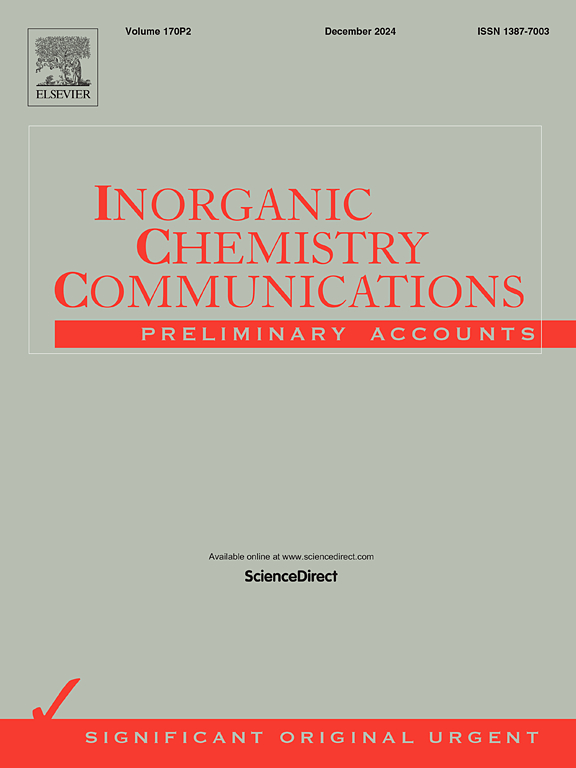Recent advancements in polythiophene-based adsorbents for heavy metal ion removal: Modification, kinetics and mechanistic insights
IF 4.4
3区 化学
Q1 CHEMISTRY, INORGANIC & NUCLEAR
引用次数: 0
Abstract
The enhanced environmental contamination of heavy metals has inclined researchers towards enhancing adsorbents. In this regard, Polythiophene (PTh)-based adsorbents have been noticed because of their conjugated polymer structure that makes them have effective delocalized π-system and sulfur-substituted thiophene rings for the adsorption of the heavy metal ions. PTh and its composites have been explored as effective adsorbents to capture heavy metal ions from wastewater because of their high conductivity, chemical stability, and modification ability. These materials can be functionalized with different chemical moieties to improve their adsorption capacities, selectivity, and reusability, making them an ideal candidate for sustainable water treatment technologies. An overview of various adsorbent heavy metal ion removal methods followed by the in-depth analysis of PTh structure, properties, and fabrication techniques. The review highlights the substantial improvement in adsorption capacity and selectivity achieved through modifications enhancing the adsorbent ability to form strong coordination bonds with metal ions. Furthermore, this comprehensive review delves into kinetic and mechanistic insights wherein chemical adsorption is identified as the predominant mechanism for heavy metal capture. The high regeneration ability of modified PTh is also explored, suggesting its potential as a sustainable and efficient solution for large-scale environmental remediation. Despite the effectiveness and recyclability of PTh-based adsorbents, challenges such as economic viability and large-scale application costs of adsorbents are highlighted.

求助全文
约1分钟内获得全文
求助全文
来源期刊

Inorganic Chemistry Communications
化学-无机化学与核化学
CiteScore
5.50
自引率
7.90%
发文量
1013
审稿时长
53 days
期刊介绍:
Launched in January 1998, Inorganic Chemistry Communications is an international journal dedicated to the rapid publication of short communications in the major areas of inorganic, organometallic and supramolecular chemistry. Topics include synthetic and reaction chemistry, kinetics and mechanisms of reactions, bioinorganic chemistry, photochemistry and the use of metal and organometallic compounds in stoichiometric and catalytic synthesis or organic compounds.
 求助内容:
求助内容: 应助结果提醒方式:
应助结果提醒方式:


